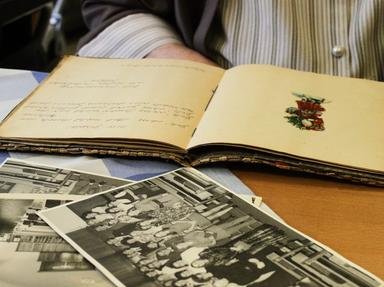Quiz Answer Key and Fun Facts
1. In 1933, Greta Garbo played the lead role as the monarch at the head of an empire. What is the name of that monarch and also the film?
2. Josef von Sternberg's 1934 Pre-Code film "The Scarlet Empress" is a liberal adaptaion of Catherine the Great's diaries. Who played Catherine in the film?
3. In this film, a disenchanted German Field Marshall joins the plot to bring down Adolf Hitler, but he is accused of treason and given a loathsome choice. Which 1951 film, directed by Henry Hathaway, am I talking about?
4. 1957's "Gunfight at the O.K. Corral" was based on real events in Tombstone, Arizona, in 1881. The gunfight involved a gang of outlaws against three Earp brothers and Doc Holliday. Who played Doc Holliday in the film?
5. This powerful female leader has inspired umpteen films. She was first played on film by Florence Lawrence in 1908, then by Claudette Colbert in 1934, Sophia Loren in 1954, and Monica Bellucci in 2002, among others. However, the best-known portrayal was by Elizabeth Taylor in 1963 in a film which took its title from her popular name. What was that title and who was this woman?
6. 1967's "Bonnie and Clyde" did a lot to cement the Barrow gang's place in American popular history. Three of the following actors are in the film, but one isn't. Who doesn't feature in the film?
7. In 1975, François Truffaut directed "The Story of Adele H.". It starred Isabelle Adjani as Adele whose mental illness manifests itself in her romantic obsession with a British military officer. In the film and in real life, Adele H. was the daughter of a hugely famous writer, who was he?
8. "The Elephant Man" is a 1980 film about Joseph Merrick, an extremely physically deformed man who lived from 1862 - 1890. Who directed the film?
9. This 2010 film, Mark Wahlberg plays professional boxer Micky Ward, and Christian Bale plays his half-brother and boxing trainer Dicky Eklund. Dicky is a has-been boxer and has a turbulent relationship with Micky. A television crew is making a documentary about Dicky, who loves the attention. However, when it's aired, it isn't quite the portrayal he was hoping for. What's the title of this David O. Russell-directed film?
10. The 2010 film subtitled "Vie Heroique" deals with a French singer who did everything from chanson to new wave via reggae and Nazi rock. Who was that singer?
Source: Author
thula2
This quiz was reviewed by FunTrivia editor
skunkee before going online.
Any errors found in FunTrivia content are routinely corrected through our feedback system.

